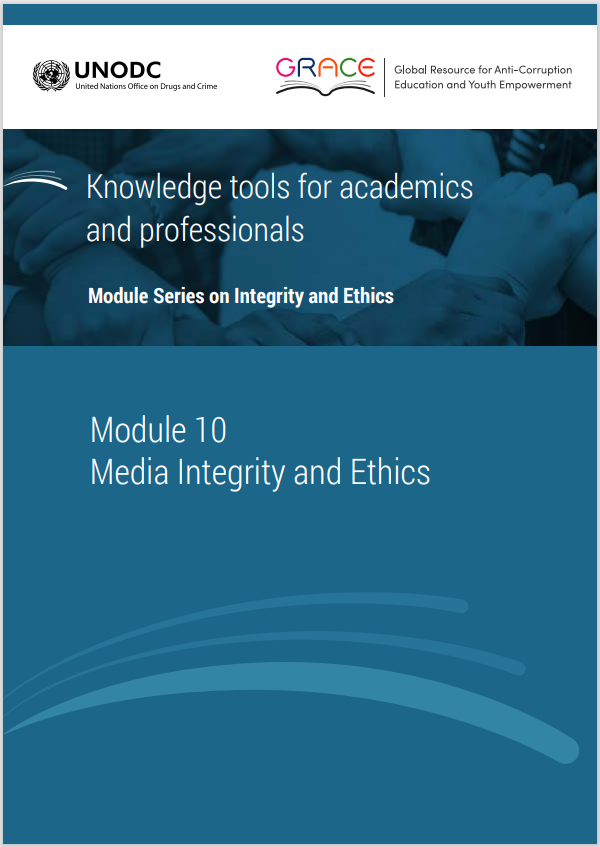This module is a resource for lecturers
Possible class structure
This section contains recommendations for a teaching sequence and timing intended to achieve learning outcomes through a three-hour class. The lecturer may wish to disregard or shorten some of the segments below in order to give more time to other elements, including introduction, icebreakers, conclusion or short breaks. The structure could also be adapted for shorter or longer classes, given that the class durations vary across countries.
Introduction (10 mins)
- It is recommended to start the class with questions, as a way to engage students and encourage them to think critically about the role of ethics in both media provision and consumption. The lecturer can open the class with these questions: Who controls the narrative of the media in important issues? If media providers do not ethically investigate their sources and report with honesty, who will know if a media report is true and how can we test its truth?
- Following a short discussion, the lecturer introduces the Module and emphasizes the importance of media ethics.
- The lecturer may note that media ethics covers a wider range of media/journalism issues than those covered by this short Module, including free press, freedom and access of information, sources, confidentiality, accountability, conflict of interest, deception, hacking, sensationalism and misrepresentation. The lecturer will not have time to describe fully all of these issues but may give quick explanations with current examples as time permits.
How to choose your news - Exercise 1 (20 mins)
- Screen How to choose your news TED Talk (5 mins)
- Conduct Exercise 1 - ask students to write out current news choices (5 mins)
- Guide a discussion in which students explain their choices (10 mins)
The rise of fake news - Exercise 2 (30 mins)
- Screen the short documentary on fake news (3 mins)
- Conduct Exercise 2 - ask students to create a fake news story (15 mins)
- Discuss the rise of fake news and the ethical issues involved (12 mins)
Does the media have a "duty of care"? - Exercise 3 (30 mins)
- Screen Does the media have a "duty of care"? TED Talk (11 mins)
- Conduct Exercise 3 - divide students into consumer, journalist, media producer (owner) and government regulator (4 mins)
- Students perform role-play/debate, emphasizing the primary ethical focus or expectations of each group (15 mins)
The Potter Box method - Exercise 4 (30 mins)
- Explain the Potter Box, demonstrating each quadrant with Q&A (15 mins)
- Conduct Exercise 4 - Students apply Potter Box to a case study and discuss the case and their own "boxes" (15 mins)
Astroturf and manipulation of media messages - Exercise 5 (30 mins)
- Screen Astroturf and manipulation of media messages TED Talk (15 mins) or alternatively screen the TED Talk Think Like A Journalist (15 mins)
- Conduct Exercise 5 - lead class discussion on "astroturfing" stories of fake news from the iMediaEthics website (15 mins)
Citizen Journalism and Conclusion - Exercise 6 (30 mins)
- Screen Citizen Journalism TED Talk (20 mins)
- Conduct Exercise 6 using Code of Ethics for Journalist and citizen journalism (cited in core readings) (10 mins)
 Next page
Next page
 Back to top
Back to top
